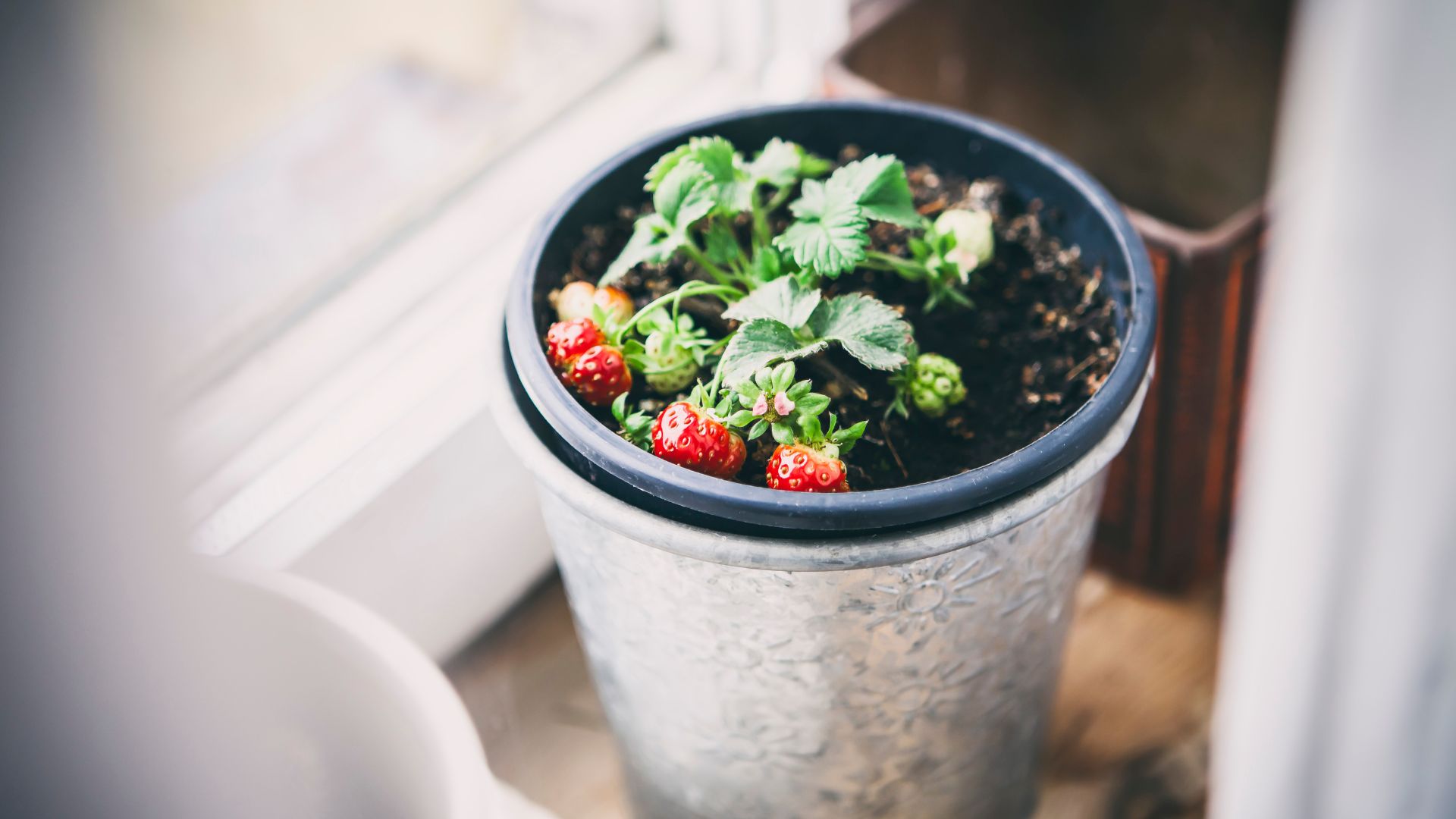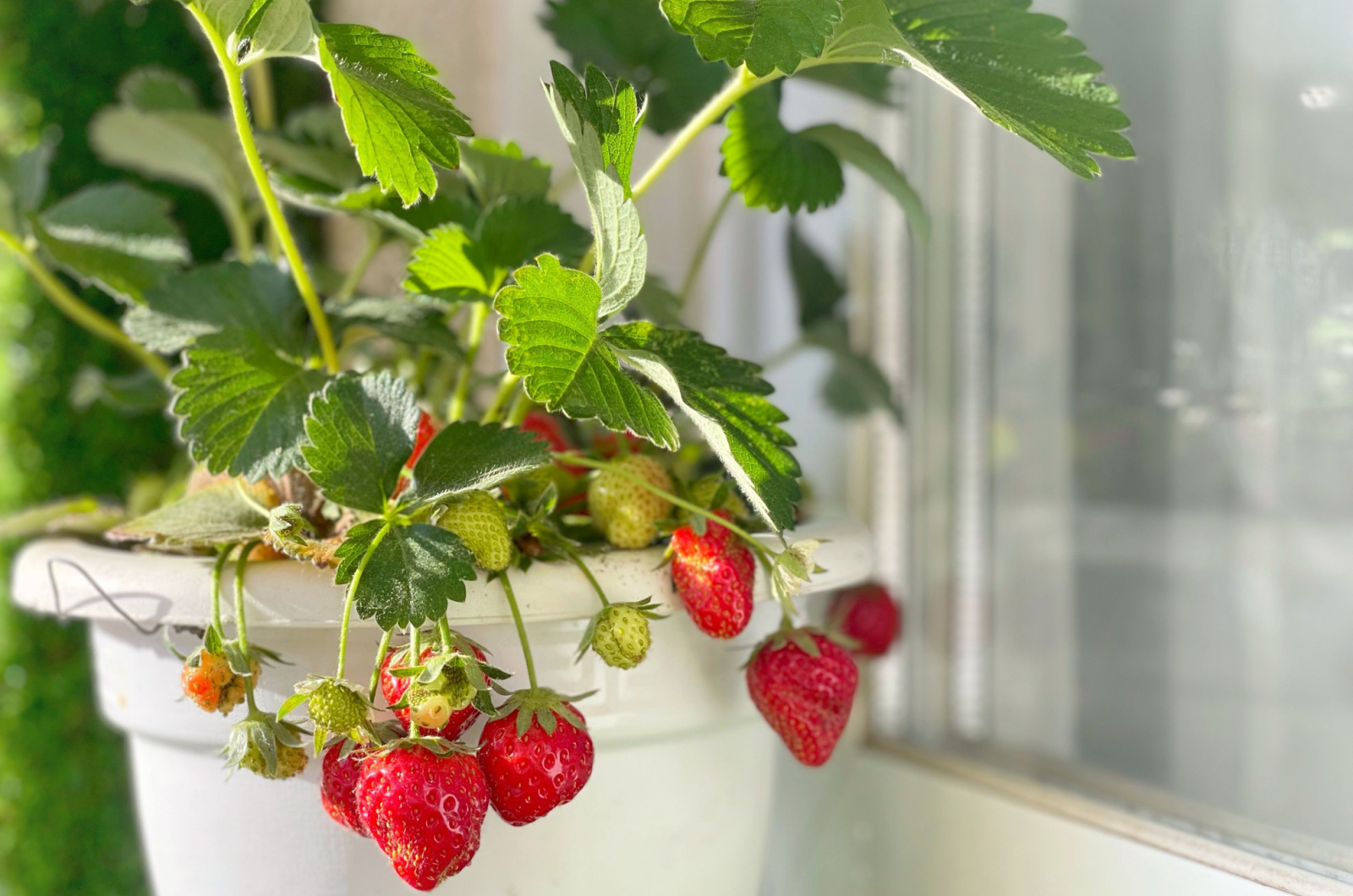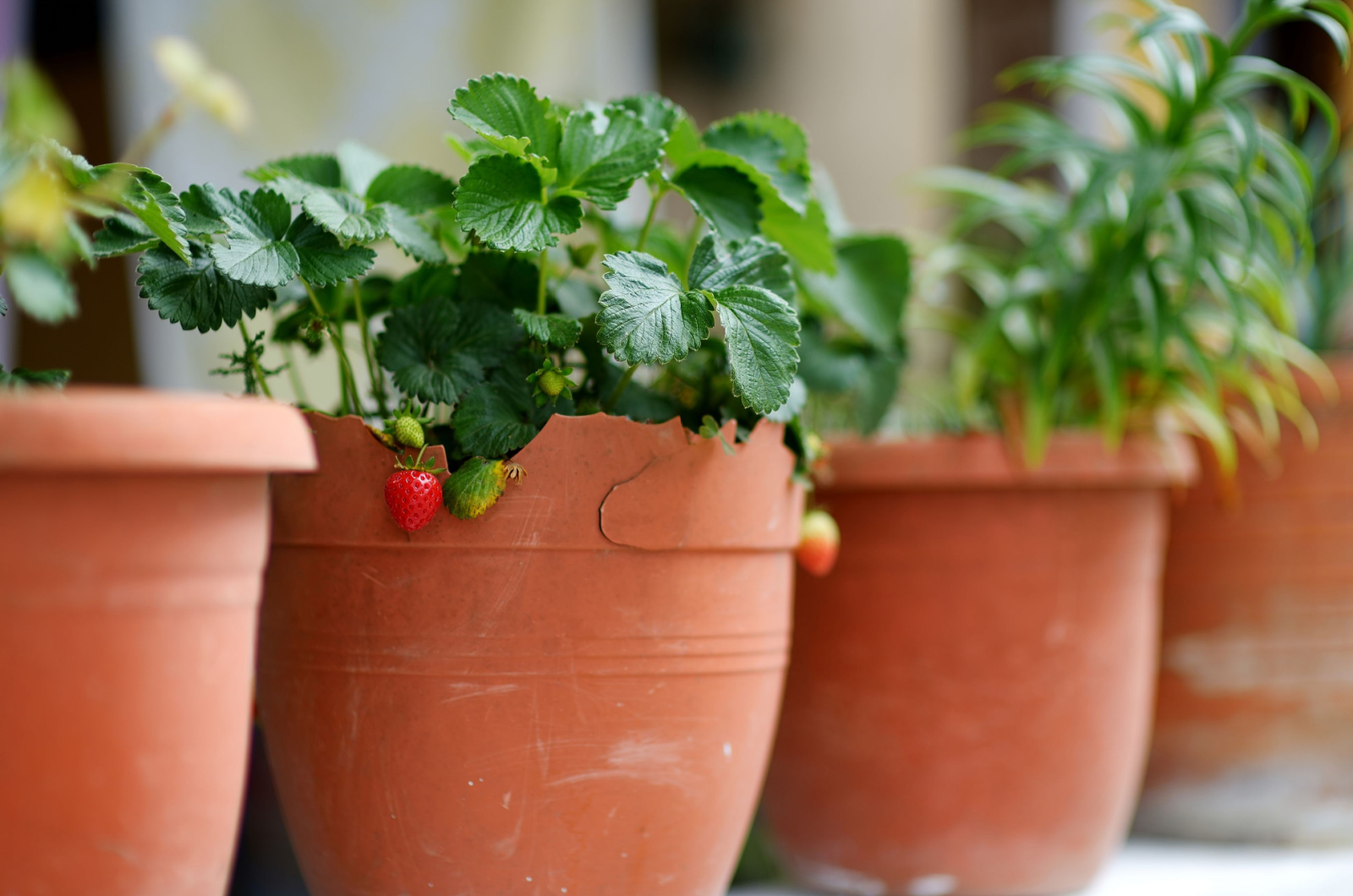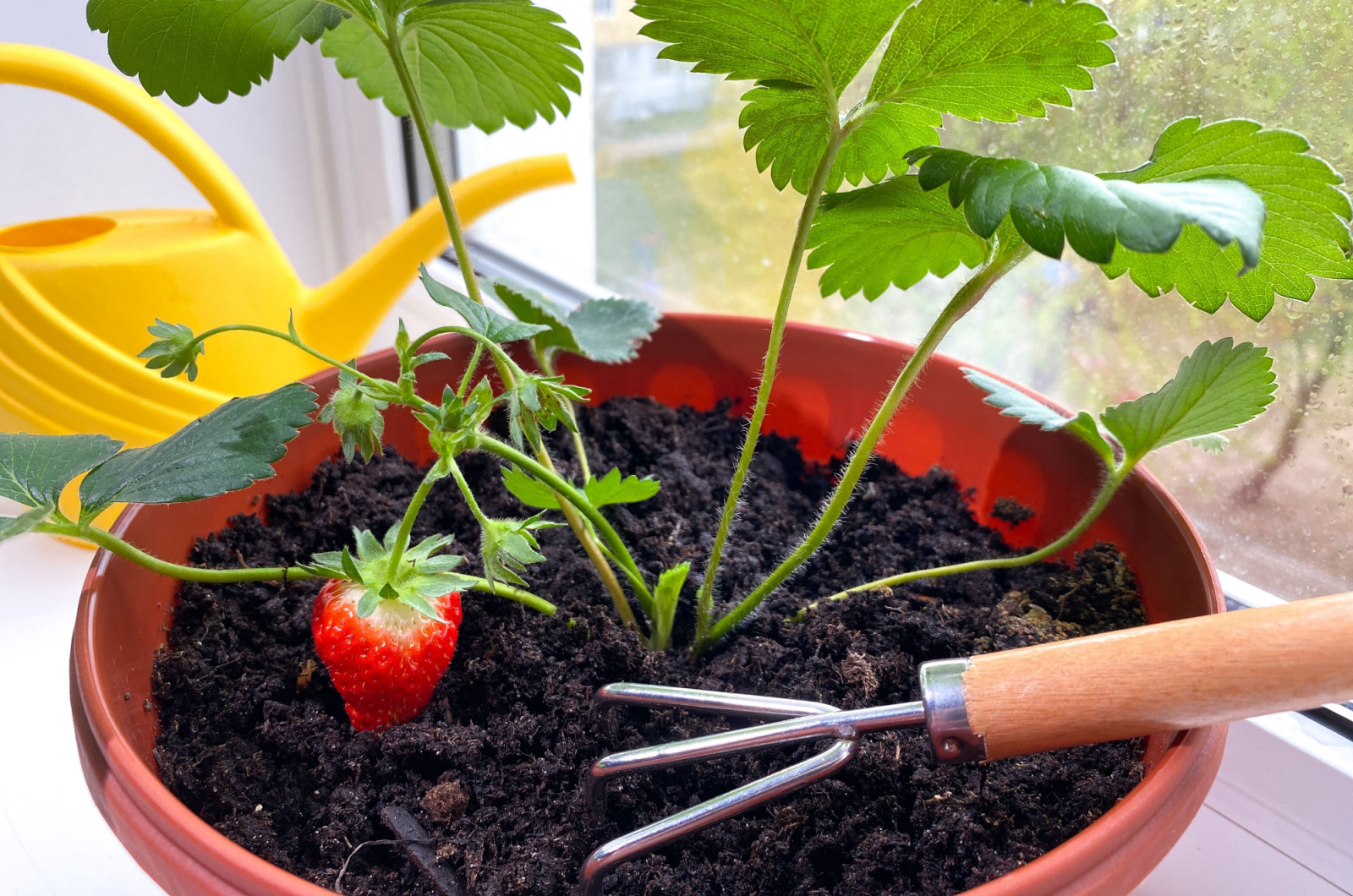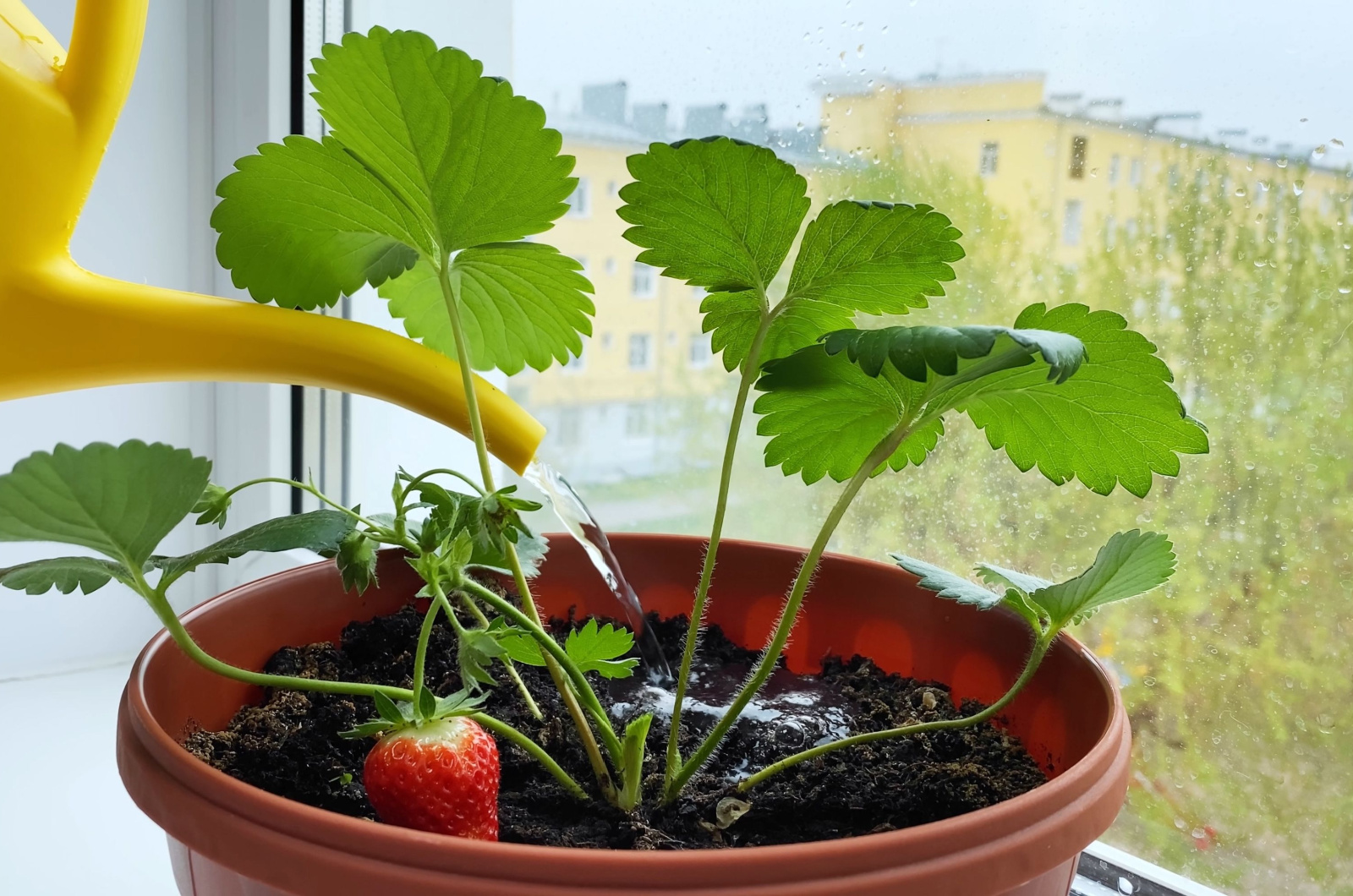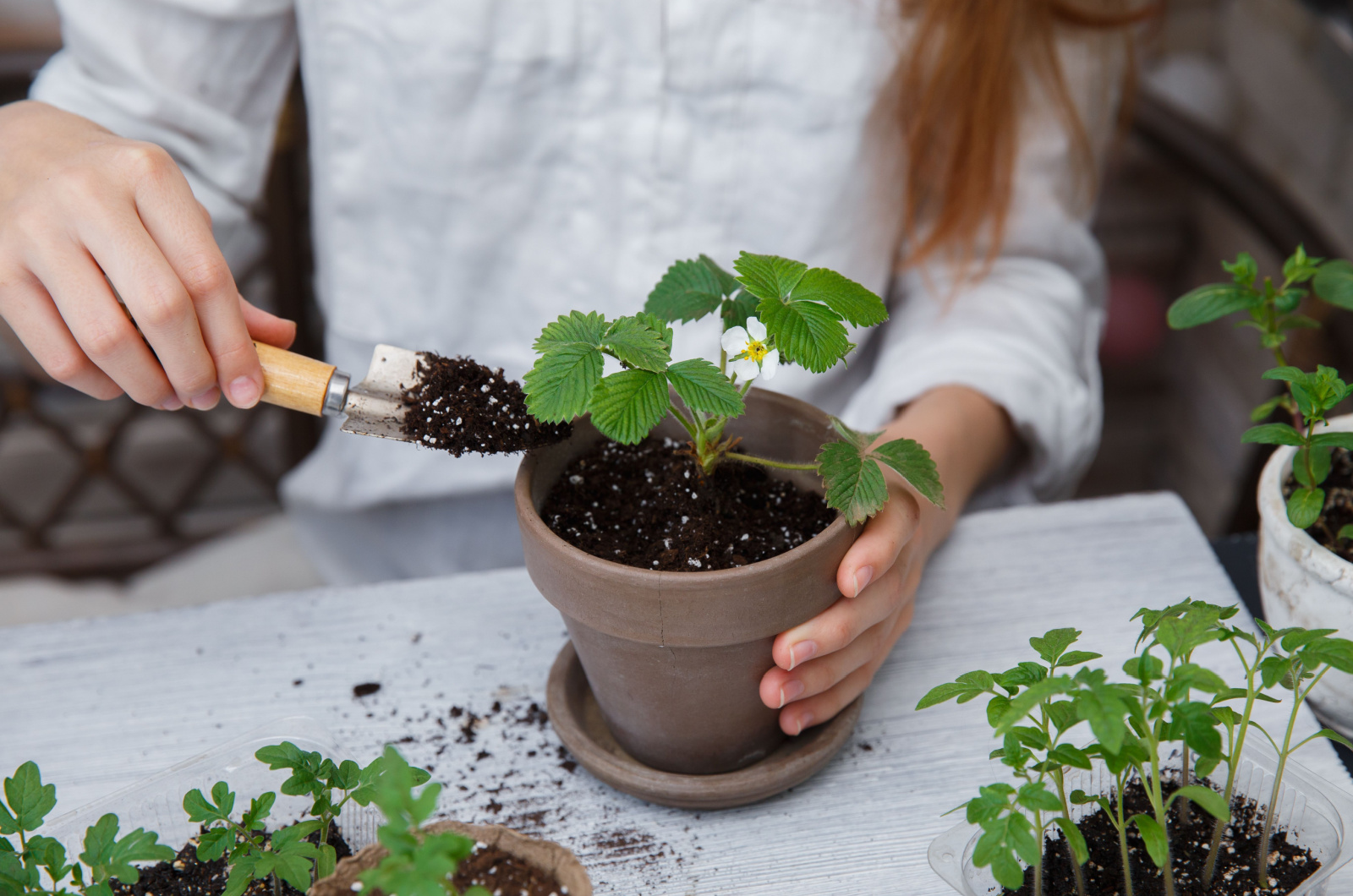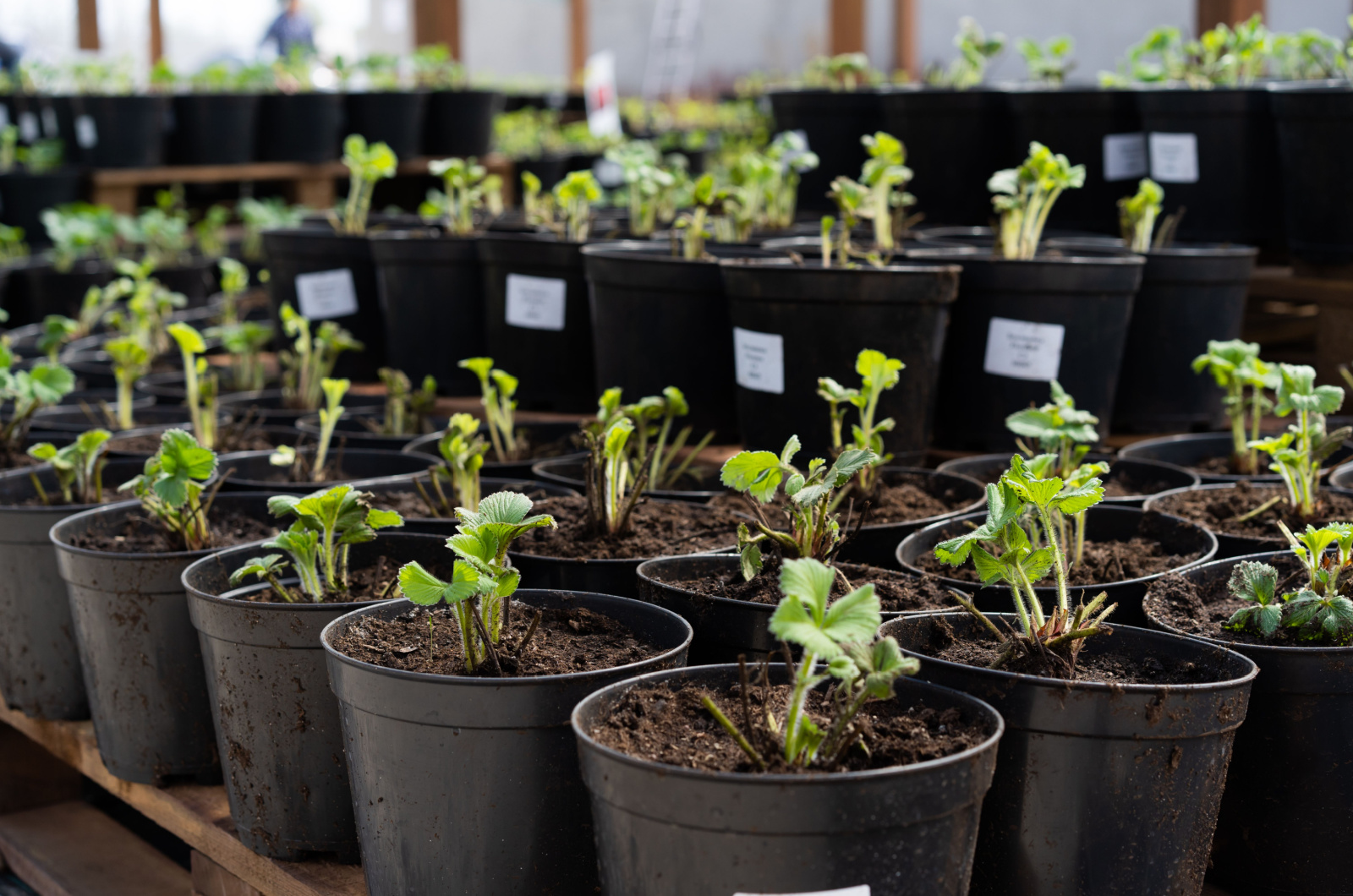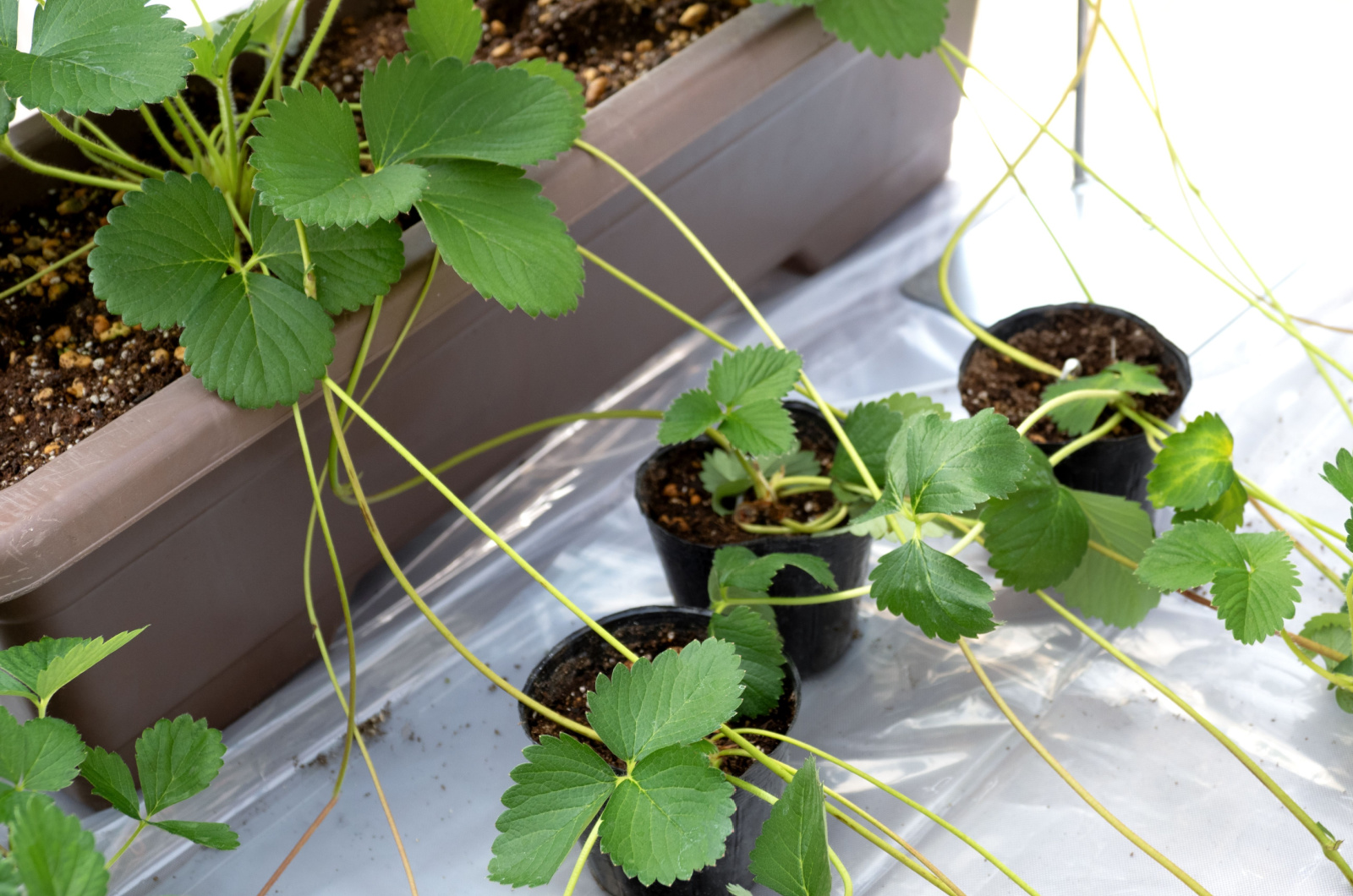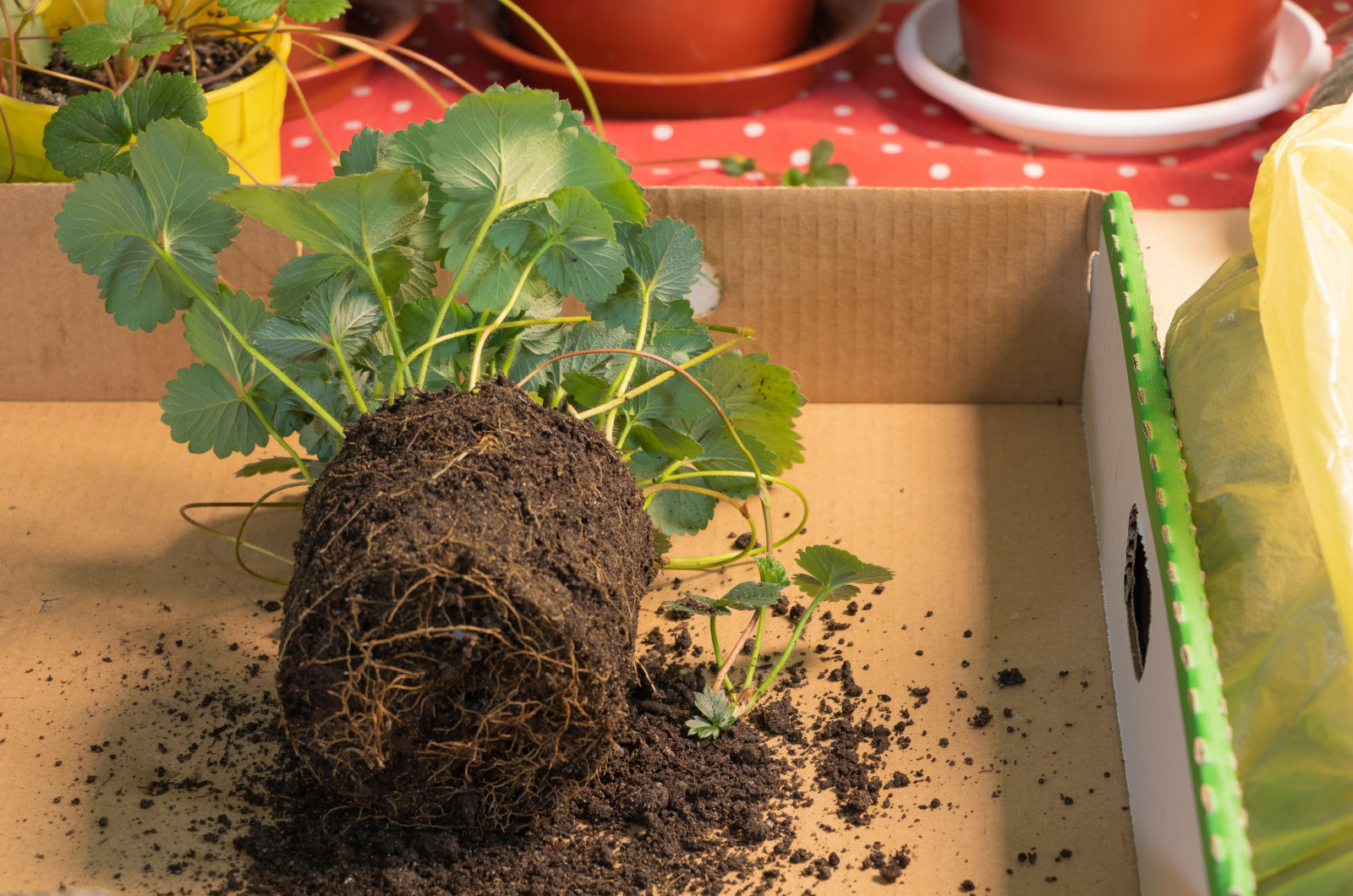Strawberries are one of the most common fruiting plants grown in gardens. They can grow well if planted directly in the ground or added to container gardens.
But sometimes, the weather can be too cold or hot and you won’t get a good harvest. Luckily, these perennial evergreens can perform well indoors and give you fruits year-round.
In this article, I’ll show you how to grow strawberries indoors, from planting to harvest!
Let’s get started!
Is Growing Strawberries Indoors A Good Idea?
This is a common question I get related to strawberry plants and the answer is simple: yes, it’s a good idea.
Remember that it’s easier to control and ensure all the conditions indoors, and that’s the perfect solution if the weather outdoors isn’t suitable for strawberry cultivation.
Of course, just like all other plants, strawberries thrive in specific environments. For best results, you’ll need to provide them with full sun and use artificial lights only if you can’t provide any natural light.
Let’s see what other things to ensure for your indoor strawberries to thrive!
A Guide On Planting Strawberries Indoors
When planting strawberries, you need to consider three major factors: when to plant, which pots to use, and how much space to leave between each plant.
When To Plant
The great news is that you can plant these fruits inside your home at any time of the year.
The only reason why most gardeners choose to plant them in early spring is because it’s easier to find strawberry seedlings or mature plants.
Pots To Select
When selecting a pot for your indoor strawberries, the last thing you should be thinking about is its appearance.
The size and material of the pot play a major role; glazed pottery, plastic, and unglazed terracotta planters will work best.
When it comes to size, make sure the pot you choose isn’t too deep because these perennials have shallow root systems.
The Ideal Spacing
No matter if you grow your strawberries in pots or in the ground, you need to be extremely careful about the spacing.
Overcrowding leads to various issues in strawberry plants. If you have a pot that’s approximately 12 inches in diameter, it’s not advisable to plant more than 3 strawberries.
How To Care For Indoor Strawberries
Growing strawberries isn’t a hard task and you don’t have to be a master gardener to keep these plants happy and healthy.
However, you should meet their basic requirements, and here are the guidelines.
Light
You definitely won’t see many strawberry fruits if you don’t give the plants enough light, especially during the initial growth stages.
A location exposed to full sun for at least 6 hours is ideal for indoor strawberries. If you don’t have such a spot, the only solution is to use artificial lights.
Watering Schedule
Well, the easiest way to inhibit strawberry growth is to follow an inadequate watering schedule. You must keep the soil moist, but you should never allow your strawberries to grow in waterlogged soil.
Newly planted strawberries will need watering every day, and then every other day once they’re well-established.
I always irrigate my strawberries with filtered water because tap water may contain some chemicals that are harmful to your plants.
Soil
The majority of houseplants flourish in porous and loamy soil with good drainage. Potting mixes based on coconut coir or peat moss are a perfect choice for strawberries.
You should amend it with some quick-draining materials, such as perlite, for better drainage and porosity.
Temperature And Humidity
Now let’s discuss the ideal daytime and nighttime temperatures for your strawberries. These evergreen perennials perform best if daytime temperatures are between 68-75 degrees Fahrenheit.
Temperatures should be slightly cooler during the night for your strawberries to generate the most delicious fruits.
These plants are susceptible to powdery mildew disease, and one of the ways to prevent it is to keep humidity at approximately 60-75%.
Fertilizing Schedule
Once your strawberries are established, you should feed them monthly using a balanced liquid fertilizer.
You also need to apply balanced fertilizer when the fruiting growth stage ends and your strawberries start generating new buds within the crown.
Pollination
Since the bees can’t pollinate strawberries cultivated indoors, the only solution is to hand-pollinate these plants.
You will need a cotton swab or a small paintbrush to distribute the pollen from the anthers (outer ring) to the stigma (inner ring) within the same flower.
You can do this by gently shaking or tapping the flower to encourage the movement of pollen to reach the receptive stigma.
Varieties To Select
If you want to have fresh and flavorful strawberries year-round, you should grow everbearing aka day-neutral types.
Here are my recommendations.
• Cabrillo: This variety is renowned for its large sweet/sour fruits and high yield.
• Seascape: It generates fruits and blossoms year-round and generates a high yield of large and flavorful fruits.
• Ozark Beauty: Compared to other varieties, the Ozark Beauty is larger and can reach 12 inches, which means more fruits!
• Albion: This compact variety is adorned with deep green leaves and produces medium-sized, flavorful fruits.
How To Harvest
No matter how tempting it can be, don’t pick your strawberries until they’re uniformly red. Fully ripe fruits have reached their maximum sweetness and flavor.
When harvesting, take the fruits along with ¼ of the stem. This way, you’ll avoid damaging the fruits.
You can expect your day-neutral strawberry cultivars to produce a lot of fruits every couple of weeks.
Tips For Pruning
Generally speaking, you don’t need to prune strawberries like you would other common fruiting plants.
But you should always remove all the damaged or dead leaves from your strawberry plant. Be careful not to damage the crown or the center of your evergreen plant.
How To Propagate Indoor Strawberries
If you already have some strawberry plants, you can use them for propagation. These perennials generate runners and the only thing you need to do is cut them off and plant them in a new pot.
These transplants typically take 5-6 weeks to generate fruits.
How To Grow Indoor Strawberries From Seeds
Sometimes, the ready-to-plant seeds aren’t available, but there’s one technique that you can use.
Your goal is to ensure winter conditions by putting the seeds in the freezer for approximately 30 days. Don’t forget to thaw your strawberry seeds before planting.
When your seeds are ready, here are the steps to follow.
1. Take a small container or a seed-starting tray, fill it with suitable growing substrate, and moisten it lightly.
2. Lay the seeds on the growing medium and cover them lightly with the soil so that they’re about ⅛ inch below the surface.
3. Find a location where your strawberry seeds will receive at least 6 hours of direct sunlight daily.
4. Irrigate the seeds every 2-3 days or when the soil feels dry to touch. The best way to enhance seed germination is to ensure a moist and warm environment.
5. Be patient, your strawberry seeds can germinate in 5 to 6 months.
Repotting And Overwintering Tips
As mentioned before, these are evergreen perennial plant species but their fruit production may decrease over time.
The best idea would be to replace the plants every 2-3 years using new seeds or transplants. Your strawberries will go into dormancy after generating fruits; make sure to give them enough light and moisture.
Be careful about watering your dormant strawberries; they will most likely need irrigation once a month.
Common Issues
One of the major benefits of indoor cultivation is that plants are rarely infested by pests. This is especially important for birds because these cute animals enjoy munching on berries.
Unfortunately, diseases are more common; root rot and powdery mildew may affect your indoor strawberries.
The first one typically occurs in overwatered plants, whereas the latter is caused by incorrect humidity. Providing your strawberries with the ideal watering schedule and recommended humidity will help you avoid these diseases.
If you like strawberries but your outdoor conditions aren’t suitable, indoor growing will give you the same results and you can enjoy these delicious berries year-round!
Happy growing!

